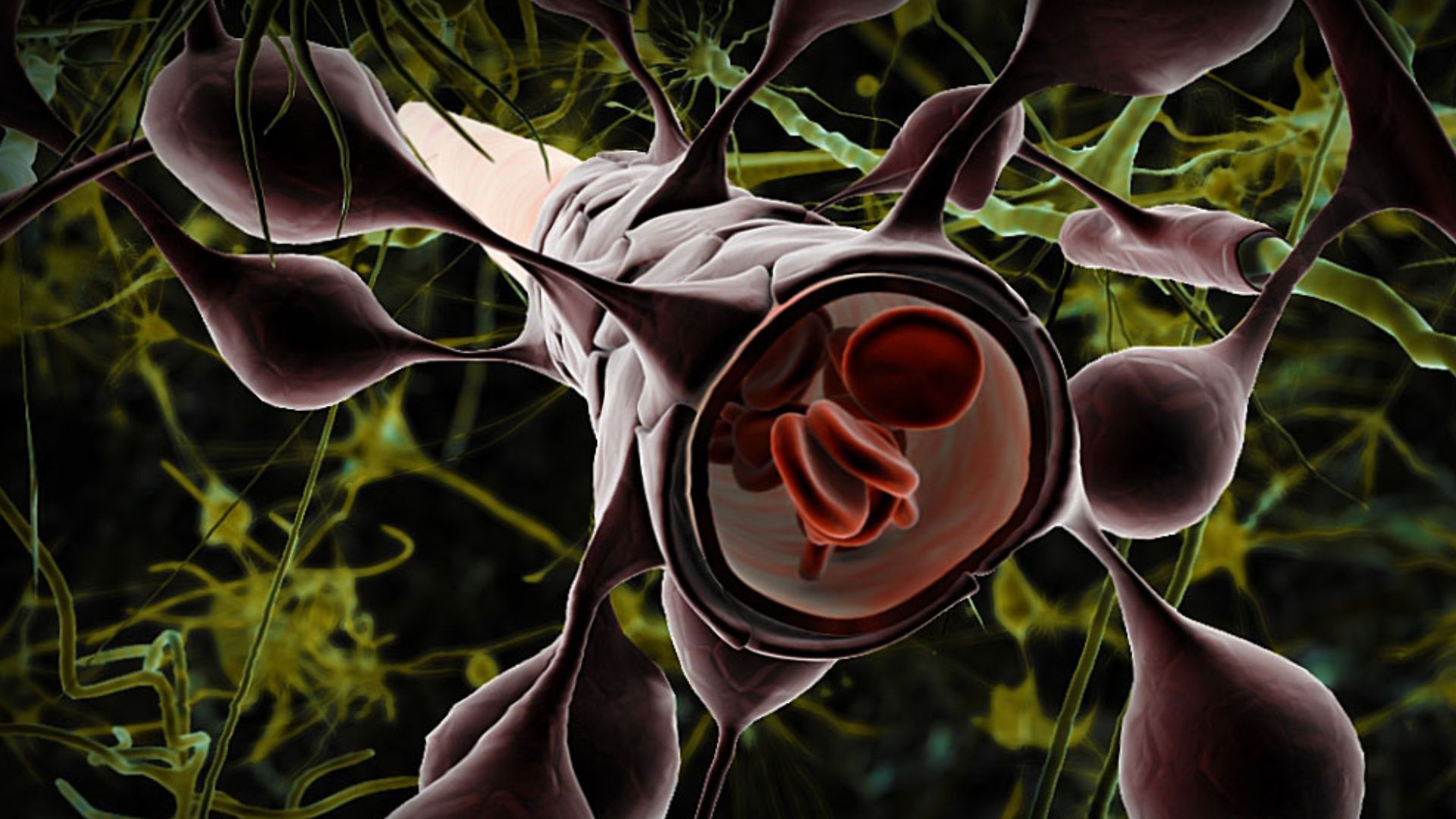In a 1st, scientist grow mini brains with functional blood-brain barriers
New "assembloids" grown from stem cells offer a tiny, working model of the blood-brain barrier.

For the first time, scientists have grown miniature models of the human brain that incorporate the organ's built-in security system.
The roughly sesame seed-size models include functional blood-brain barriers (BBB). In a full-size brain, the BBB would protect the delicate organ from potentially harmful substances that might be circulating through the rest of the body.
"Lack of an authentic human BBB model has been a major hurdle in studying neurological diseases," study co-author Ziyuan Guo, a neurobiologist and stem cell scientist at Cincinnati Children's Hospital Medical Center, said in a statement. "This is an important advance because animal models we currently use in research do not accurately reflect human brain development and BBB functionality."

Guo and his colleagues described their tiny, BBB-carrying brain models in a recent study, published May 15 in the journal Cell Stem Cell.
In the body, the BBB lines blood vessels that pass through the brain and allows only some substances through, such as hormones and glucose, while blocking out threats, such as toxins and bacteria. It also blocks out many medicines, which poses a challenge for drug developers working on treatments for brain diseases.
The new, lab-grown models combine cerebral organoids — 3D clusters of brain cells grown from stem cells — with blood-vessel organoids, which are also grown from stem cells but resemble vasculature in the body. Together, these two types of organoids form what the researchers call "assembloids," which simulate how maturing brain and blood vessel cells grow and interact with one another.
Get the world’s most fascinating discoveries delivered straight to your inbox.
The study showed that, about a month after being combined, the two types of organoids merged together into spherical structures that each measured about the size of a sesame seed. The culture that supports the growth and merger of the two organoids must be carefully controlled, and a physical gel matrix acts as a scaffolding to help support the assembloids, Guo told Live Science in an email.
As proof-of-concept for how these models might be used, the researchers grew assembloids with cells from patients with a cerebral cavernous malformation, meaning a cluster of abnormally shaped blood vessels in their nervous system. These malformations sometimes arise from genetic mutations and can cause symptoms that lead to serious complications, such as stroke and seizure.
The researchers' assembloids captured cellular features seen in people with cerebral cavernous malformations, "offering new insights into the underlying molecular and cellular pathology of cerebral vascular disorders," Guo said in the statement.
In the team's initial tests, the BBB assembloids can be grown for up to five months, or potentially longer, but this hasn't been tested, he added in an email. Four to five months of growth corresponds with roughly the second semester of brain development in the womb.
In the future, the team aims to grow similar assembloids using stem cells from people with different brain diseases, so that the final models would reflect the underlying biology of those conditions.
And more broadly, such assembloids could not only be used to study brain diseases but also to test new drugs, investigate how toxins injure the brain and BBB and reveal novel strategies for delivering medicines through the BBB.
"BBB assembloids represent a game-changing technology with broad implications for neuroscience, drug discovery, and personalized medicine," Guo said in the statement.
Editor's note: This story was updated shortly after publishing with additional quotes from Guo.
Ever wonder why some people build muscle more easily than others or why freckles come out in the sun? Send us your questions about how the human body works to community@livescience.com with the subject line "Health Desk Q," and you may see your question answered on the website!

Nicoletta Lanese is the health channel editor at Live Science and was previously a news editor and staff writer at the site. She holds a graduate certificate in science communication from UC Santa Cruz and degrees in neuroscience and dance from the University of Florida. Her work has appeared in The Scientist, Science News, the Mercury News, Mongabay and Stanford Medicine Magazine, among other outlets. Based in NYC, she also remains heavily involved in dance and performs in local choreographers' work.


